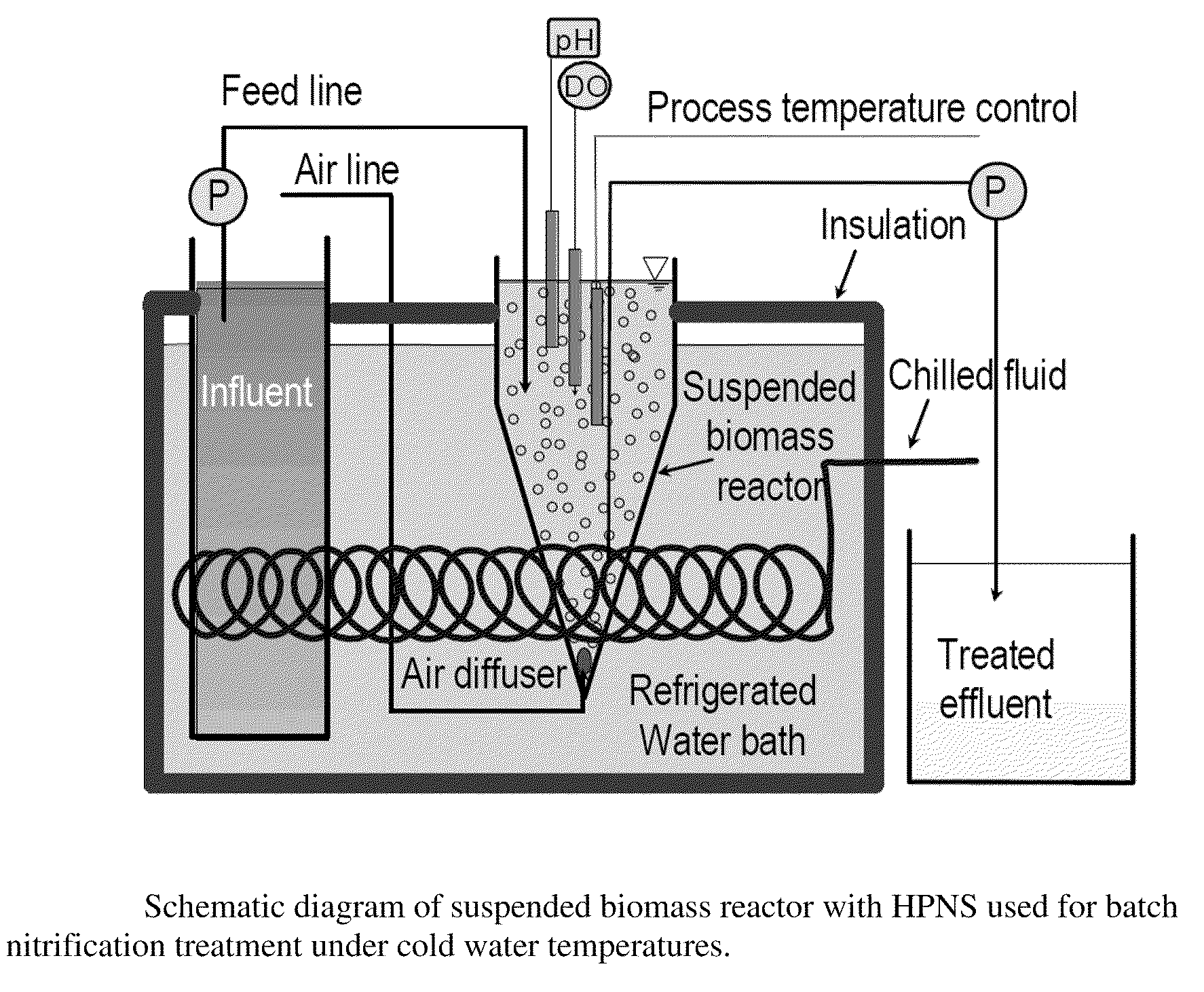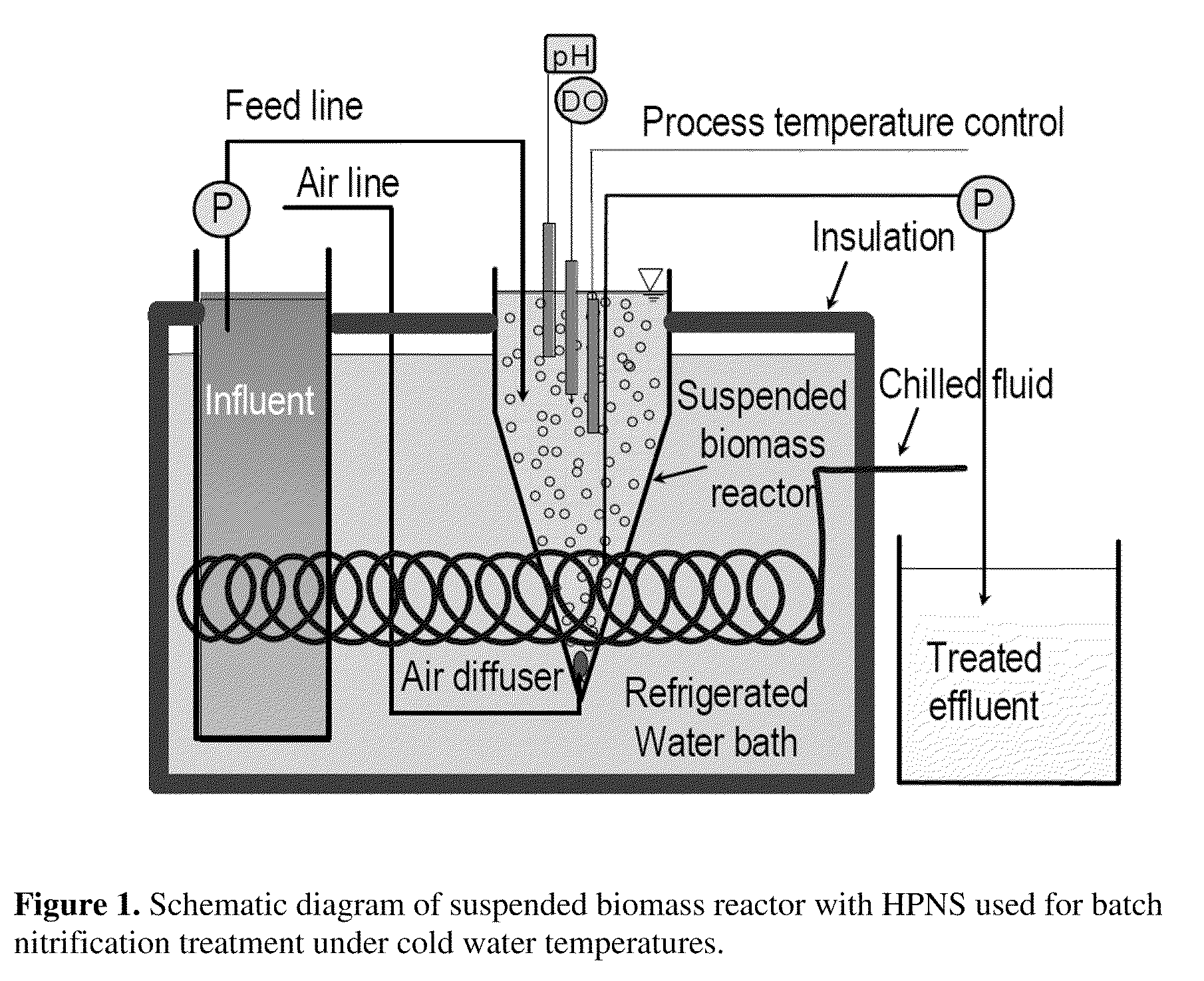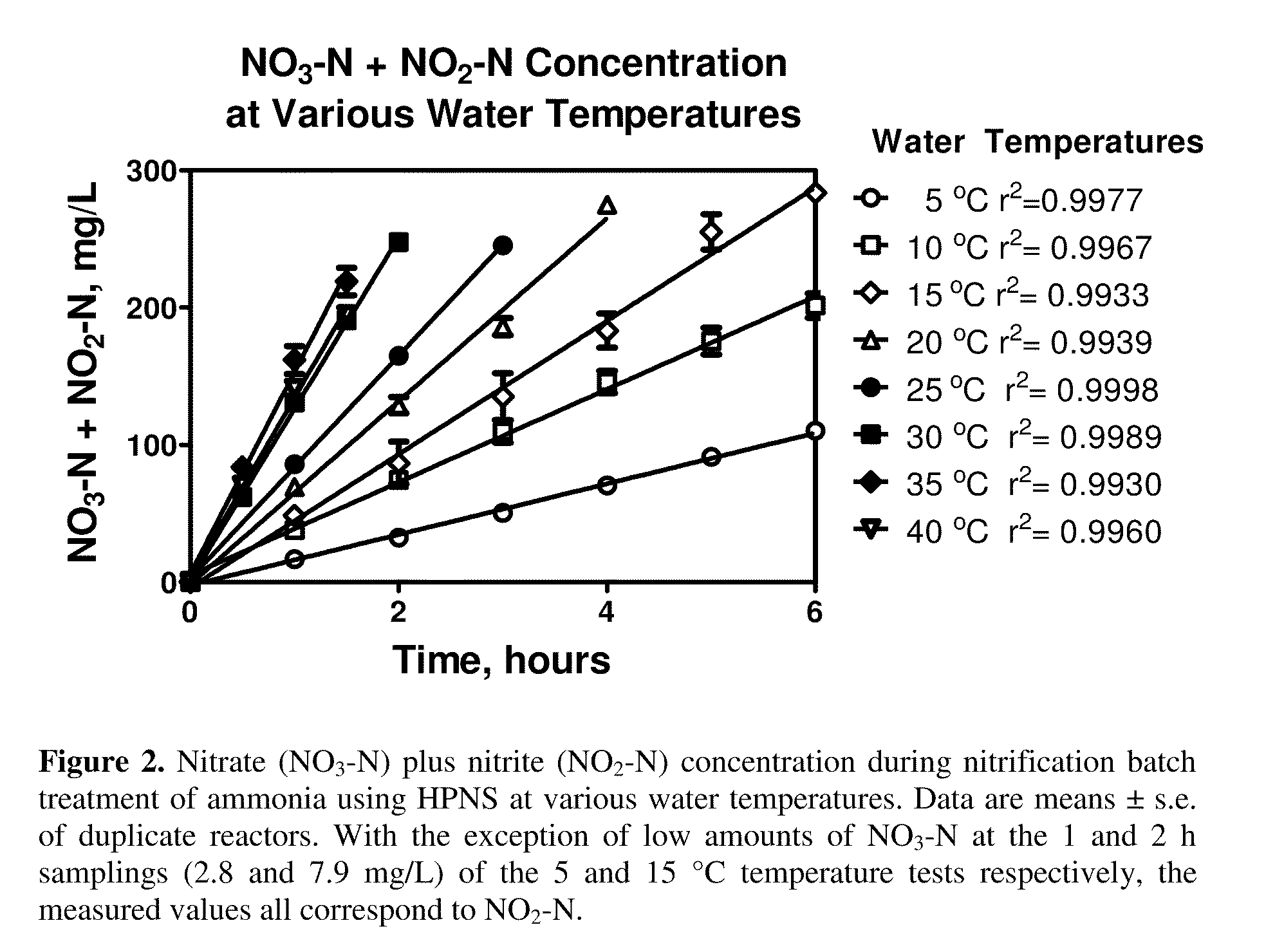High Performance Nitrifying Sludge For High Ammonium Concentration and Low Temperature Wastewater Treatment
a technology of nitrifying sludge and high ammonium concentration, which is applied in the direction of biological water/sewage treatment, sustainable biological treatment, and bacteria-based processes, can solve the problems of habitat degradation, municipal and agricultural waste disposal is a major problem, and the management of wastewater collected from livestock rearing facilities poses a significant challenge to the producer or farmer, so as to reduce the concentration of ammonia in wastewater. , the effect of high
- Summary
- Abstract
- Description
- Claims
- Application Information
AI Technical Summary
Benefits of technology
Problems solved by technology
Method used
Image
Examples
example 1
[0050]In this example, the nitrification performance and characteristics of HPNS were evaluated at low process temperatures. Batch nitrification tests were done under controlled laboratory conditions to reveal the relationship between nitrification activity of HPNS and temperature. Furthermore, the microbial community composition of HPNS was characterized by molecular methods.
Materials and Methods
Preparation and Maintenance of Nitrifying Culture
[0051]Vanotti and Hunt previously described the procurement of an ALNS culture using seed biofilm sludge from the surface soil of an overland field plot in a pig farm in Duplin County, N.C. and fill-and-draw cultivation method (Vanotti and Hunt, 2000. ibid). The overland flow provided nitrification treatment for a wastewater effluent from an anaerobic swine lagoon (Szogi et al., 2004. Nitrification options for pig wastewater treatment. New Zealand Journal of Agricultural Research, 47, 439-448). The obtained ALNS was maintained for 12 years in...
PUM
| Property | Measurement | Unit |
|---|---|---|
| temperature | aaaaa | aaaaa |
| temperature | aaaaa | aaaaa |
| temperature | aaaaa | aaaaa |
Abstract
Description
Claims
Application Information
 Login to View More
Login to View More - R&D
- Intellectual Property
- Life Sciences
- Materials
- Tech Scout
- Unparalleled Data Quality
- Higher Quality Content
- 60% Fewer Hallucinations
Browse by: Latest US Patents, China's latest patents, Technical Efficacy Thesaurus, Application Domain, Technology Topic, Popular Technical Reports.
© 2025 PatSnap. All rights reserved.Legal|Privacy policy|Modern Slavery Act Transparency Statement|Sitemap|About US| Contact US: help@patsnap.com



